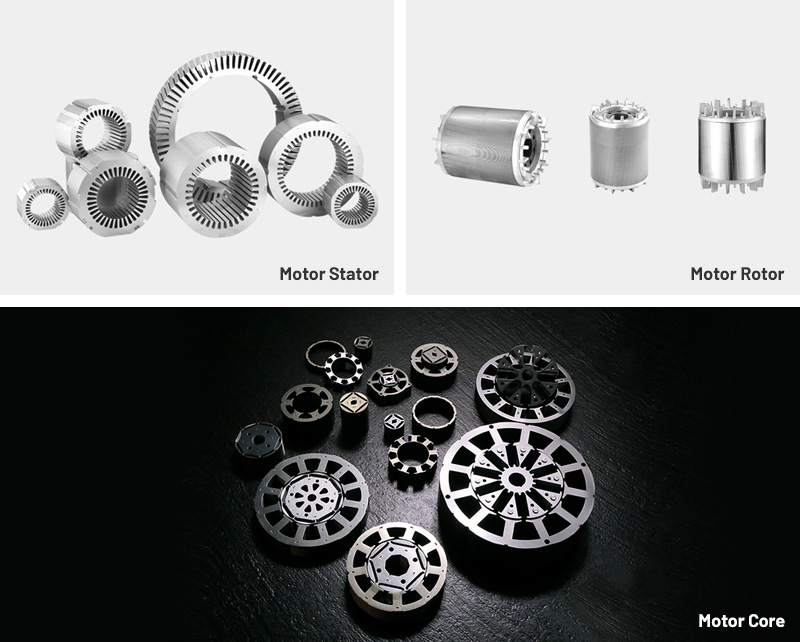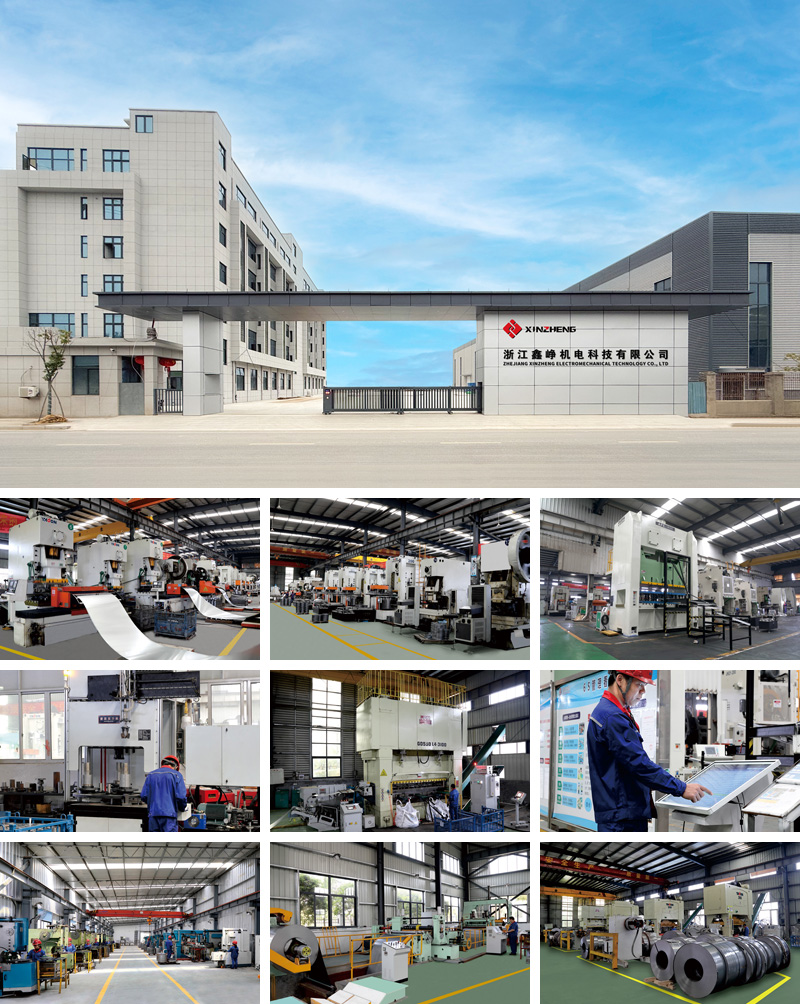Electric motors are central to modern industrial automation, transportation, and energy generation systems. From high-speed drives in manufacturing plants to traction motors in electric vehicles, motor performance directly influences energy efficiency, operational reliability, and product lifespan. With global initiatives targeting energy efficiency, environmental sustainability, and lower operational costs, there is growing demand for motor components that withstand higher mechanical stresses while maintaining magnetic performance.
High-strength motor laminations have emerged as a critical solution to meet these requirements. These laminations provide structural integrity to motor cores, resist mechanical deformation under high rotational speeds, and maintain precise alignment of stator and rotor stacks. The demand is particularly strong in sectors such as electric vehicles, aerospace, industrial automation, HVAC systems, and renewable energy, where motors face both thermal and mechanical challenges. According to recent market analyses, manufacturers increasingly prioritize laminations that enhance efficiency and durability while supporting compact, high-power-density designs.
Electric motors operate on alternating magnetic fields, where the steel core experiences repeated magnetization and demagnetization. This generates two primary forms of energy loss: hysteresis loss, from the repeated reorientation of magnetic domains, and eddy current loss, from circulating currents in conductive materials. Minimizing these losses is crucial for energy efficiency.
Motor laminations reduce eddy currents by segmenting the core into thin, insulated sheets. High-strength motor laminations go further by combining structural rigidity with magnetic performance. They are engineered to resist mechanical stress from centrifugal forces and vibrations while maintaining optimal magnetic flux paths. Precision in material selection, lamination thickness, and stacking alignment is critical to achieving a balance between mechanical durability and electromagnetic efficiency.
High-strength motor laminations are typically manufactured from cold-rolled electrical steel, often with silicon or other alloying elements to enhance both mechanical and magnetic properties. The silicon content increases electrical resistivity, reducing eddy current formation, while controlled grain structure minimizes hysteresis loss. Some high-strength laminations incorporate special coatings or heat treatments to further improve mechanical stability without compromising magnetic permeability.
Die Design and Tooling: Precision stamping dies are engineered to exact dimensions, including slot geometry, outer diameters, and hole placement. For high-strength laminations, die materials must withstand repeated stamping without deformation, typically using hardened tool steel or tungsten-carbide alloys.
Stamping Process: Progressive stamping presses produce laminations from continuous steel strips. Each station in the press performs a specific cut or form, resulting in high-volume production of consistent lamination sheets. Precision stamping ensures uniform thickness, smooth edges, and minimal burrs, which is critical for both mechanical and magnetic performance.
Post-Processing: After stamping, laminations may undergo annealing to relieve mechanical stresses induced during stamping and to restore optimal magnetic properties. Coatings or varnishes may be applied for insulation and protection against corrosion.
Stacking and Core Assembly: Laminations are stacked to form rotor or stator cores. Proper stacking ensures concentric alignment, minimal air gaps, and uniform magnetic paths, while mechanical reinforcement (bonding, riveting, or welding) enhances structural integrity under high-speed rotation.
High-strength laminations support higher rotational speeds and torque outputs while maintaining dimensional stability, reducing vibration, and extending motor lifespan.
Several factors influence the quality and performance of high-strength motor laminations:
Material Quality: The purity of electrical steel, alloy composition, and grain orientation affect both magnetic properties and mechanical strength. Impurities or inconsistent steel batches can increase losses or reduce durability.
Dimensional Tolerance: Deviations in lamination thickness, slot geometry, or hole alignment can introduce uneven magnetic flux paths, air gaps, and mechanical imbalance, reducing efficiency and reliability.
Insulation Integrity: High-strength laminations often include interlaminar coatings to prevent eddy currents. Damage or uneven coating can increase losses and generate heat.
Stacking Accuracy: Misalignment or loose stacking can cause vibration, noise, or mechanical failure during operation. Precision stacking and bonding are critical to performance.
Manufacturing Consistency: Variations in stamping speed, die wear, or post-processing can affect lamination uniformity, which in turn influences core losses and structural stability.
Attention to these factors ensures that high-strength motor laminations provide both magnetic efficiency and mechanical durability in demanding applications.
For motor manufacturers, sourcing high-strength motor laminations involves evaluating suppliers on several key criteria:
Material Certification and Traceability: Suppliers should provide detailed documentation specifying steel grade, magnetic properties, mechanical strength, lamination thickness, and resistivity. This ensures consistency across production batches.
Manufacturing Capability: Suppliers must have precision stamping capabilities, including die design, high-speed presses, and experience with high-strength steel. Ability to adapt to custom geometries is beneficial for specialized applications.
Quality Control: Rigorous inspection protocols, including dimensional verification, core-loss testing, and insulation checks, are essential to ensure consistent performance.
Post-Processing Services: Some suppliers offer annealing, coating, stacking, or bonding, reducing the workload on the OEM and ensuring uniform assembly quality.
Supply Stability: For large-scale production, suppliers must provide reliable material sourcing, sufficient capacity, and predictable lead times to prevent production delays.
Selecting a qualified supplier reduces the risk of defects, enhances motor performance, and ensures long-term reliability.
While high-strength motor laminations provide significant advantages, several challenges persist:
High Initial Tooling Costs: Die design and tooling for high-strength laminations are expensive, making small-volume runs less cost-effective.
Material Waste: Stamping processes can generate scrap, and material utilization must be optimized to reduce costs.
Design Inflexibility: Changes to lamination geometry require retooling, which can be costly and time-consuming for customized or evolving motor designs.
Mechanical Stress and Burrs: Stamping introduces stresses and possible edge irregularities, which must be mitigated to preserve magnetic and mechanical properties.
Quality Control Demands: Ensuring uniform insulation, dimensional accuracy, and mechanical integrity requires stringent inspection and monitoring systems.
Addressing these challenges requires disciplined manufacturing practices, careful planning, and continuous supplier engagement.
High-strength motor laminations are widely used in industries where motor performance and durability are critical:
Electric Vehicles (EVs) and Hybrid Vehicles: Traction motors require high-speed, high-torque operation with minimal vibration. High-strength laminations ensure core stability under demanding conditions.
Industrial Automation: Motors in conveyor systems, machine tools, and heavy-duty drives benefit from laminations that resist mechanical fatigue and maintain efficiency over prolonged operation.
HVAC and Home Appliances: Fans, compressors, and pumps require laminations that reduce noise and vibration while maintaining energy efficiency.
Renewable Energy Generators: Wind turbines, hydro generators, and other renewable-energy applications require laminations that support continuous operation, resist mechanical stress, and maintain efficiency under variable loads.
Specialized Applications: Aerospace, robotics, and medical equipment often demand laminations with extremely tight tolerances, high mechanical strength, and predictable magnetic properties.
The high-strength motor lamination industry continues to evolve in response to technological and market pressures:
Thinner Laminations with Tighter Tolerances: To reduce core losses and improve power density, manufacturers are producing thinner laminations with precise geometry for high-speed and high-efficiency motors.
Automated Stacking and Assembly: Robotics and automated stacking improve consistency, reduce labor costs, and enhance throughput for large-volume production.
Advanced Materials and Coatings: Development of specialized electrical steels with optimized grain structure, coatings, and heat treatments improves magnetic performance and mechanical stability.
Hybrid Manufacturing Methods: For complex or low-volume designs, laser cutting, etching, or wire EDM may complement stamping, offering flexibility while balancing cost and precision.
Sustainability and Lifecycle Focus: High-strength laminations contribute to energy efficiency and reduced maintenance costs, aligning with regulatory demands and operational cost reduction strategies.
These trends suggest that high-strength motor laminations will continue to be a key enabler for high-performance, energy-efficient, and durable electric motors.
Q: Why are high-strength laminations necessary compared to standard laminations?
A: High-strength laminations provide enhanced mechanical durability, resist deformation at high speeds, and maintain dimensional accuracy, which is critical for motors under heavy load or high-speed conditions.
Q: How do high-strength laminations affect motor efficiency?
A: By reducing core deformation, maintaining precise stacking, and supporting uniform magnetic flux, high-strength laminations minimize losses due to vibration, eddy currents, and hysteresis, improving overall energy efficiency.
Q: What are the main challenges in producing high-strength laminations?
A: Challenges include high tooling costs, managing mechanical stress and burrs from stamping, maintaining insulation integrity, and ensuring consistent dimensional tolerance and material properties.
Q: Can small-scale motor manufacturers adopt high-strength laminations economically?
A: For small runs or prototypes, alternative cutting methods (e.g., laser cutting or etching) may provide more flexibility, though at higher per-unit cost. Large-scale production favors precision stamping to balance efficiency and cost.
High-strength motor laminations are a fundamental component for motors requiring durability, efficiency, and reliability under demanding conditions. Through careful material selection, precision stamping, and stringent quality control, these laminations provide structural integrity, reduce losses, and support high-performance motor designs across automotive, industrial, renewable energy, and specialized sectors.
As energy efficiency standards tighten and demand for high-speed, high-power-density motors grows, the adoption of high-strength motor laminations will continue to increase. Manufacturers who invest in precision, material quality, and robust supply chains position themselves to deliver motors that meet performance expectations while reducing operational costs and maintenance requirements over the product lifecycle.
Product Category

Comprehensive Strength


Copyright © Zhejiang Xinzheng Electromechanical Technology Co., Ltd. All Rights Reserved.
This website uses cookies to ensure you get the best experience on our website.